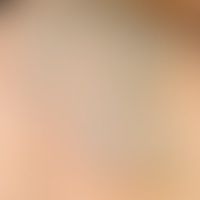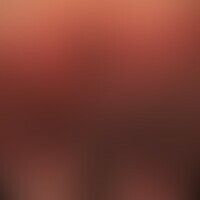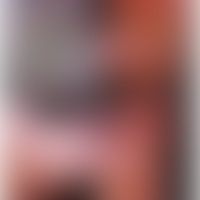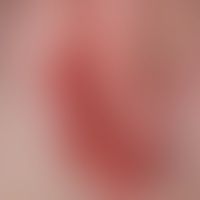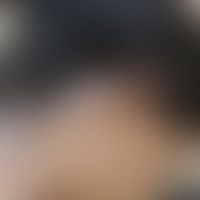Image diagnoses for "Plaque (raised surface > 1cm)"
570 results with 2865 images
Results forPlaque (raised surface > 1cm)
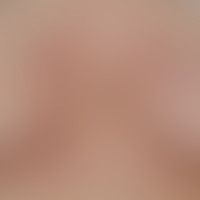
Lichen sclerosus extragenital L90.0
Lichen sclerosus extragenitaler: confetti-like white plaques in surrounding erythema; no significant subjective symptoms.
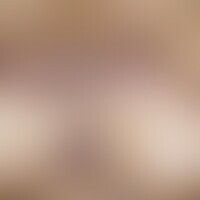
Keloid (overview) L91.0
keloid. large, brown to brown-red, very rough, smooth nodes with a jagged edge structure. not painful to the touch, with significant pressure considerable pain. postoperative condition after excision of several acne nodes in the sternal region.
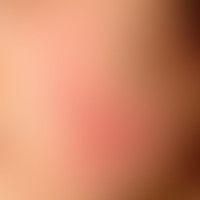
Lupus erythematosus tumidus L93.2
lupus erythematodes tumidus: for 4 weeks existing, little symptomatic, succulent, bright red, surface smooth papules and plaques. probably occurred after UV exposure (correlation could not be clearly clarified). no hyperesthesia. ANA: 1:160; DNA-Ak negative; DIF: uncharacteristic. initiation of therapy with Resochin.
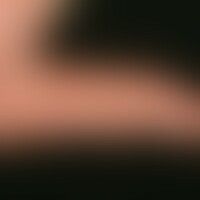
Hand and foot eczema, hyperkeratotic-rhagadiformes L24.9
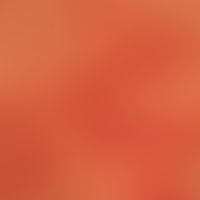
Lupus erythematodes chronicus discoides L93.0
Lupus erythematosus chronicus discoides: a relapsing, progressive, disseminated, scarring, chronic cutaneous lupus erythematosus that has been present for several years. No evidence of systemic involvement (no ANA, no DNA antibodies). Here is a detailed picture.
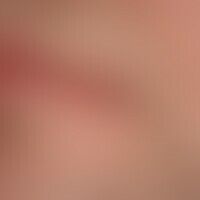
Lupus erythematodes chronicus discoides L93.0
Chronic cheilitis in lupus erythematosus chronicus discoides: chronically active, red, hyperesthetic plaques with adherent scaly deposits on the lip red of the upper and lower lip; focal areas affected are lip red and lip skin.
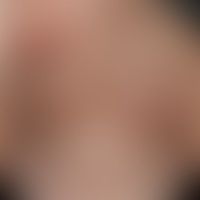
Pityriasis rosea L42
Pityriasis rosea: truncated, thick maculopapular exanthema arranged in the cleft lines, low itching.
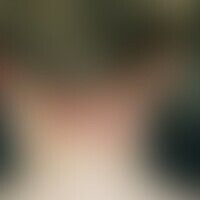
Atopic dermatitis (overview) L20.-
Eczema, atopic. solitary, chronically stationary, now acutely weeping (superinfection), blurred, itchy and painful, rough, bright red plaque.
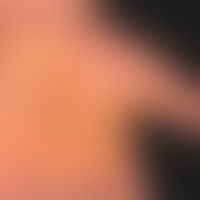
Psoriasis palmaris et plantaris (plaque type) L40.3
psoriasis palmaris et plantaris (plaque type): chronic inpatient type. deeply drawn hand lines. there is a risk of rhagade formation here. oval encircles the sharp marking zone to the wrist. arrows mark the edges of the psoriatic plaques.
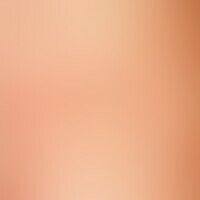
Larva migrans B76.9
Larva migrans, detail: Garland-shaped, tortuous, erythematous, partly scaly plaque on the right foot back of a 35-year-old patient after a bathing holiday in Thailand.
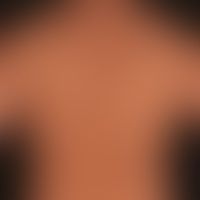
Nummular dermatitis L30.0
Nummular Dermatitis: General view: For several months persistent, strongly itching, solitary or confluent, coin-sized, infiltrated papules and plaques on the back of a 48-year-old patient.

Sézary syndrome C84.1
Sézary syndrome: extensive, less characteristic, scaly and massively itching and painful erythroderma in an 81-year-old patient.

Sézary syndrome C84.1
Sézary-Syndrome. pat. as above. symmetric, flat, hyperkeratosis at the same time with development of erythroderma
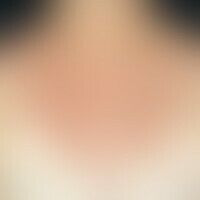
Dyskeratosis follicularis Q82.8
Dyskeratosis follicularis: densely packed brown-reddish papules, about 2-4 mm in size, which aggregate in the décolleté area; the present distribution pattern suggests a light provocation of the disease.

Becker's nevus D22.5
Becker nevus: hyperpigmented (border areas marked with arrows), hypertrichotic epidermal nevus, in a 16-year-old female patient. encircled: lichenified skin area. no complaints. therapy not necessary. hair could be depilated.
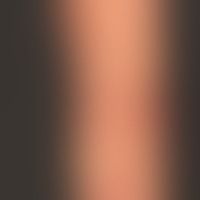
Psoriasis erythema anulare centrifugum-like L40.8
Psoriasis erythema anulare centrifugum-like: Close-up. at the elbow classic psoriasis plaque.
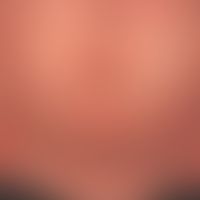
Pityriasis rubra pilaris (adult type) L44.0
Pityriasis rubra pilaris (adult type) Detail: chronic recurrent course for years with phases of marked improvement and extensive recurrence (fig. in a relapse period). Characteristic for the disease are the boundaries of the plaques drawn with a sharp pencil, resulting in the so-called "nappes claires", sharply recessed zones of unaffected skin in the case of extensive infestation.
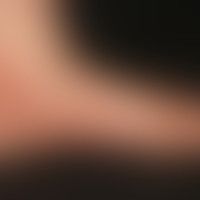
Psoriasis palmaris et plantaris (plaque type) L40.3
Psoriasis palmaris et plantaris (plaquet type): sharply defined, homogeneously red scaly and itchy plaques on the soles of the feet, spreading medially to the edge of the foot and the lower leg.
